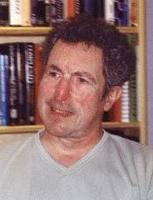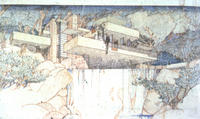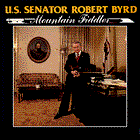Handy Dandy Index for 9/2005
Alkan, Charles (composer)“Goodbye, Vinyl” (9/12/2005)
American Red Cross“New Orleans Levees . . .” (9/8/2005)
Anne of Cleves (royal wife)“Anne of Cleves” (9/22/2005)
Army Corps of Engineers, U.S.“New Orleans Levees . . .” (9/8/2005)
Augustino, Jocelyn (photographer)“Urban Search & Rescue . . .” (9/9/2005)
Baseball“Cocktail Rules” (9/15/2005)
“Casual Summer Romance” (9/5/2005)
Beatles, The (rock/pop group)“Goodbye, Vinyl” (9/12/2005)
Berndtson, Peter (architect)“Edgar Tafel at Fallingwater” (9/1/2005)
Boleyn, Anne (royal wife)“Anne of Cleves” (9/22/2005)
Boston Red Sox, baseball club“Casual Summer Romance” (9/5/2005)
Brackenridge, Hugh Henry (attorney)“Rebel Lawyers” (9/28/2005)
Bradford, David (attorney)“Rebel Lawyers” (9/28/2005)
Brown, Michael (FEMA administrator)“Michael Brown Testifies . . . (9/27/2005)
Brown v. Board of Education (1954)“Rebel Lawyers” (9/28/2005)
Bush, George H.W. (U.S. president)“New Orleans Levees . . .” (9/8/2005)
Bush, George W. (U.S. president)“Land Rush” (9/20/2005)
Byrd, Robert (U.S. senator)“Goodbye, Vinyl” (9/12/2005)
Carter, Jimmy (U.S. president)“New Orleans Levees . . .” (9/8/2005)
Cherokee Land Strip Rush (1889)“Land Rush” (9/20/2005)
Chicago Cubs, baseball club“Casual Summer Romance” (9/5/2005)
Choates, Harry (Cajun fiddler)“Goodbye, Vinyl” (9/12/2005)
Clemente, Roberto (baseball player)“Casual Summer Romance” (9/5/2005)
Clinton, Bill (U.S. president)“New Orleans Levees . . .” (9/8/2005)
“Land Rush” (9/20/2005)
CocktailDB, the Internet Cocktail Database“Cocktail Rules” (9/15/2005)
Cox, Tom (deputy mayor, Pittsburgh)“New Orleans Levees . . .” (9/8/2005)
Cromwell, Thomas (royal minister)“Anne of Cleves” (9/22/2005)
Cruise, Tom (actor)“Land Rush” (9/20/2005)
Curtis, Mallet-Prevost, Colt & Mosle (law firm)“Cocktail Rules” (9/15/2005)
Davis, Mike (author)“New Orleans Levees . . .” (9/8/2005)
Dead Cities (2003), book“New Orleans Levees . . .” (9/8/2005)
Delius, Frederick (composer)“Goodbye, Vinyl” (9/12/2005)
Denny, Reginald (actor)“Cocktail Rules” (9/15/2005)
Diner (1982), film“Goodbye, Vinyl” (9/12/2005)
Dukakis, Michael (U.S. pres. candidate)“New Orleans Levees . . .” (9/8/2005)
Embury, David A. (author/lawyer)“Cocktail Rules” (9/15/2005)
Fallingwater (house)“Fallingwater Audio” (9/24/2005)
“WDUQ-FM to air . . .” (9/14/2005)
“Edgar Tafel at Fallingwater” (9/1/2005)
Fallingwater Rising (2003), book“WDUQ-FM to air . . .” (9/14/2005)
“Edgar Tafel at Fallingwater” (9/1/2005)
Far and Away (1992), film“Land Rush” (9/20/2005)
Federal Bar Association“Rebel Lawyers” (9/28/2005)
FEMA“Urban Search & Rescue . . .” (9/9/2005)
Fine Art of Mixing Drinks, The (1948), book“Cocktail Rules” (9/15/2005)
Fischer, Scott (mountain climber)“Going Up is Optional . . .” (9/29/2005)
Fournier, Ron (AP reporter)“New Orleans Levees . . .” (9/8/2005)
Geminiani, Francisco (composer)“Goodbye, Vinyl” (9/12/2005)
Hall, Rob (mountain climber)“Going Up is Optional . . .” (9/29/2005)
Harrison, George (rock/pop star)“Goodbye, Vinyl” (9/12/2005)
Hart, William S. (actor)“Land Rush” (9/20/2005)
Henry VIII (king)“Anne of Cleves” (9/22/2005)
Holbein, Hans (portraitist)“Anne of Cleves” (9/22/2005)
Homestead Act (1862)“Land Rush” (9/20/2005)
Horses, Arabian“Michael Brown Testifies . . . (9/27/2005)
Hutchison, Kay Bailey (U.S. senator)“Going Up is Optional . . .” (9/29/2005)
Internet Dating“Anne of Cleves” (9/22/2005)
James, Bill (author)“Casual Summer Romance” (9/5/2005)
Jazz music“Cocktail Rules” (9/15/2005)
“Goodbye, Vinyl” (9/12/2005)
Jefferson, Thomas (U.S. president)“Rebel Lawyers” (9/28/2005)
Jerry’s Records (store)“Goodbye, Vinyl” (9/12/2005)
Joy Division (rock group)“Goodbye, Vinyl” (9/12/2005)
Katrina, Hurricane (2005)“Michael Brown Testifies . . . (9/27/2005)
“Land Rush” (9/20/2005)
“Urban Search & Rescue . . .” (9/9/2005)
“New Orleans Levees . . .” (9/8/2005)
Kerr, Walter (author)“Goodbye, Vinyl” (9/12/2005)
Koufax, Sandy (baseball player)
“Casual Summer Romance” (9/5/2005)
Krakauer, Jon (author/climber)“Going Up is Optional . . .” (9/29/2005)
Madan, KC (helicopter pilot)“Going Up is Optional . . .” (9/29/2005)
Maddux, Greg (baseball player)“Casual Summer Romance” (9/5/2005)
Mays, Willie (baseball player)“Casual Summer Romance” (9/5/2005)
Milhaud, Darius (composer)“Goodbye, Vinyl” (9/12/2005)
Mondale, Walter F. (U.S. pres. candidate)“New Orleans Levees . . .” (9/8/2005)
Monk, Thelonious (jazz pianist)“Goodbye, Vinyl” (9/12/2005)
Monty Python“Goodbye, Vinyl” (9/12/2005)
Mt. Everest (Sagarmatha)“Going Up is Optional . . .” (9/29/2005)
Namba, Yasuko (mountain climber)“Going Up is Optional . . .” (9/29/2005)
Organic Vision: The Architecture of Peter Berndtson (1980), book“Edgar Tafel at Fallingwater” (9/1/2005)
Pittsburgh Pirates, baseball club“Casual Summer Romance” (9/5/2005)
Plessy v. Ferguson (1896)“Rebel Lawyers” (9/28/2005)
PNC Park“Going Up is Optional . . .” (9/29/2005)
“Casual Summer Romance” (9/5/2005)
Poulenc, Francis, composer“Goodbye, Vinyl” (9/12/2005)
“Reagan Democrats”“New Orleans Levees . . .” (9/8/2005)
Roberts, Cokie, NPR/ABC commentator“Land Rush” (9/20/2005)
Roberts, John (U.S. Supreme Court nominee)“Rebel Lawyers” (9/28/2005)
Rolling Stones, The (rock group)“Going Up is Optional . . .” (9/29/2005)
Sammy Sosa’s bat, corked“Casual Summer Romance” (9/5/2005)
Seaver, Tom (baseball player)“Casual Summer Romance” (9/5/2005)
Seymour, Jane (royal wife)“Anne of Cleves” (9/22/2005)
Siegel, Fred (journalist)“New Orleans Levees . . .” (9/8/2005)
Silent Clowns, The (1975), book“Goodbye, Vinyl” (9/12/2005)
Silent films“Cocktail Rules” (9/15/2005)
“Goodbye, Vinyl” (9/12/2005)
“Suburban Politics”“New Orleans Levees . . .” (9/8/2005)
Tafel, Edgar (architect)“Fallingwater Audio” (9/24/2005)
“WDUQ-FM to air . . .” (9/14/2005)
“Edgar Tafel at Fallingwater” (9/1/2005)
Ted Williams’ head, frozen“Casual Summer Romance” (9/5/2005)
Toker, Franklin (author)“Fallingwater Audio” (9/24/2005)
“WDUQ-FM to air . . .” (9/14/2005)
“Edgar Tafel at Fallingwater” (9/1/2005)
Tumbleweeds (1926), film“Land Rush” (9/20/2005)
“Urban Homesteading”“Land Rush” (9/20/2005)
Washington, George (U.S. president)“Rebel Lawyers” (9/28/2005)
Watergate (1972-4)“Goodbye, Vinyl” (9/12/2005)
WDUQ-FM“Fallingwater Audio” (9/24/2005)
“WDUQ-FM to air . . .” (9/14/2005)
“Edgar Tafel at Fallingwater” (9/1/2005)
Weathers, Beck (pathologist/climber)“Going Up is Optional . . .” (9/29/2005)
Whiskey Rebellion (1794)“Rebel Lawyers” (9/28/2005)
Williams, Clarence (jazz bandleader)“Goodbye, Vinyl” (9/12/2005)
Wright, Frank Lloyd (architect)“Fallingwater Audio” (9/24/2005)
“WDUQ-FM to air . . .” (9/14/2005)
“Edgar Tafel at Fallingwater” (9/1/2005)



















